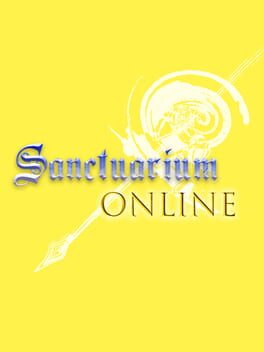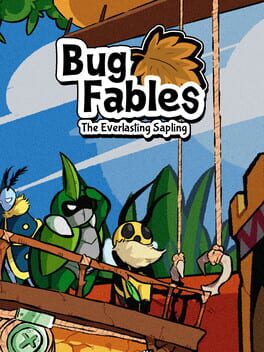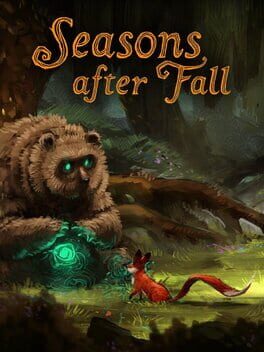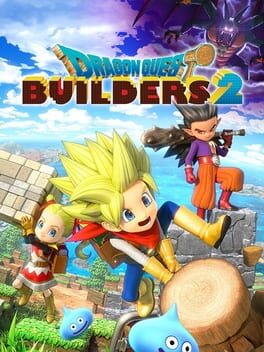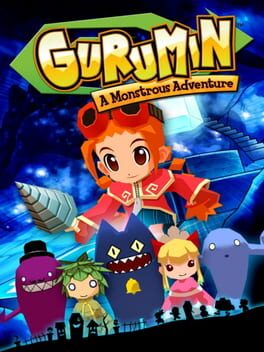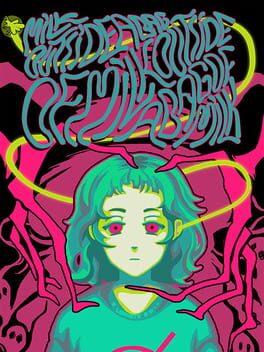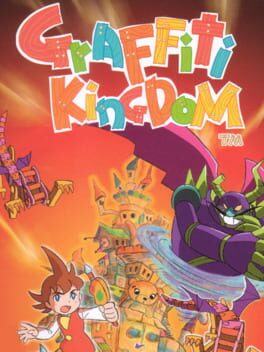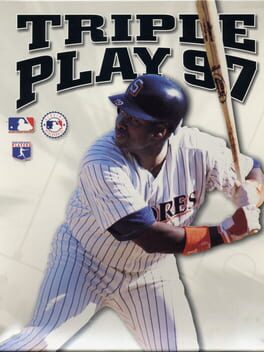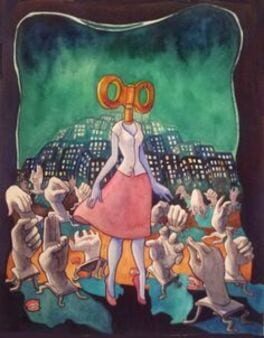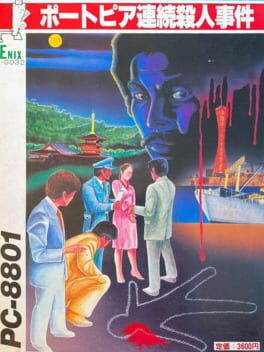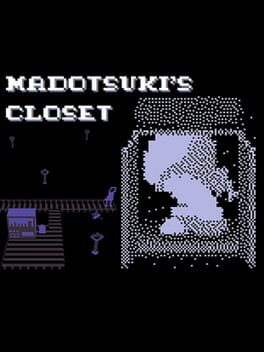MeiCheesecake
27 Reviews liked by MeiCheesecake
Ibb & Obb
2013
This game had a lot of potential with their movement puzzles and communicating to do those puzzles were fun! I feel as if the enemy puzzles in the game made some parts for frustrating though near the end... Unfortunately the lag for online creates some problems. I do have to say I adore the looks of the game and music! Overall, felt great there was just, iffy moments. Recommend with a grain of salt in mind for the frustration.
Sanctuarium Online
2022
Very cool game! Really recommend it, one of my top of 2022.
I love the camera-switching mechanic. The game puts you in what amounts to a platforming level, but the perspective makes it look like a world map out of Shin Megami Tensei 4/3, sim city, etc.
You can switch between a zoomed-out 3rd person view or a close-up, 1st person view. What's really smart is it changes your movement speed when you switch views. You can walk slowly through building interiors in 1st person, and zoom around the world in 3rd person. And the game uses its 'dual screens' to always show both views.
Design-wise this game reminds me of that new Super Mario Bowser's Fury game, but I liked this more. We're seeing more of this kind of design: islands platforming challenges set in an open world, where you travel between them. I guess it's the 3D platformer's response to the open world trend - Sonic Frontiers, Bowser's Fury. But in those you have a lot of walking around waiting for platforming..
Sanctuarium is nice because you get some of that fun 1st person exploring (I think there could have been more? That, or I missed a bunch of it -I think I sequence broke a little). Then the 3rd person feels breezy as you go between landmark to landmark, with simple platforming challenges. You still get that fun open world feel of seeing landmarks in the distance, but things here feel much more streamlined than an actual slogging open world.
The platforming controls were workable, the moveset very simple, but there was a interesting trick of being able to fly up very steep slopes, which led to some fun parkour-esque design.
The narrative theming was about a dead MMORPG. I felt like this part didn't quite execute as well as the others, but I generally like the idea of games that reflect on MMORPGs. Still waiting for someone to make the meta-Maple-Story game I desire...
I love the camera-switching mechanic. The game puts you in what amounts to a platforming level, but the perspective makes it look like a world map out of Shin Megami Tensei 4/3, sim city, etc.
You can switch between a zoomed-out 3rd person view or a close-up, 1st person view. What's really smart is it changes your movement speed when you switch views. You can walk slowly through building interiors in 1st person, and zoom around the world in 3rd person. And the game uses its 'dual screens' to always show both views.
Design-wise this game reminds me of that new Super Mario Bowser's Fury game, but I liked this more. We're seeing more of this kind of design: islands platforming challenges set in an open world, where you travel between them. I guess it's the 3D platformer's response to the open world trend - Sonic Frontiers, Bowser's Fury. But in those you have a lot of walking around waiting for platforming..
Sanctuarium is nice because you get some of that fun 1st person exploring (I think there could have been more? That, or I missed a bunch of it -I think I sequence broke a little). Then the 3rd person feels breezy as you go between landmark to landmark, with simple platforming challenges. You still get that fun open world feel of seeing landmarks in the distance, but things here feel much more streamlined than an actual slogging open world.
The platforming controls were workable, the moveset very simple, but there was a interesting trick of being able to fly up very steep slopes, which led to some fun parkour-esque design.
The narrative theming was about a dead MMORPG. I felt like this part didn't quite execute as well as the others, but I generally like the idea of games that reflect on MMORPGs. Still waiting for someone to make the meta-Maple-Story game I desire...
I think Bug Fables started as a paper mario inspiration and became way more than that. Loved the lore in the game, how well they researched bugs, the art style and how neat they expanded on the battle mechanics. I think by the end I liked how the characters were wrapped up and how the game felt like to complete, really love this buggy game!
Seasons after Fall
2016
Seasons after Fall had a few neat mechanics and an alright story. The art style and how everything was executed in this game flowed together really well! Love the moral by the end and getting all the achievements wasn't too bad for me. Overall to be a wonderful experience when I needed it and I replay it every fall for the past 6 years. :) Recommend for a short comfortable game.
There's just enough little annoyances that keep me from giving this a perfect score (Room limits, villager limits, bad music, bad camera, Hargon's speech taking forever, accidentally talking to Malroth when I want to switch my tool, that one animal breeding achievement...) but this game hits that sweet spot of being a digital form of crack for me. I turn this game on and the hours melt away. I carefully place lily pads and flower petals into large bodies of water as I forget to eat. My character sleeps more than I do. I talk to Malroth more than my own mom. It's an endless cycle.
Despite only being released on PC and the PSP, Gurumin feels like Falcom's take on the classic PS2 title, in all the right ways.
Gurumin's got this nostalgic charm to it through appealing to your kiddy side that just likes cutesy, heartwarming games. The graphics aren't revolutionary, but they get the job done while giving off this PS2 storybook feel. The character and enemy designs are all pretty adorable and definitely remind me of the cartoony feel that the PS2/GC era accomplished with most mascot platformers. The combat's pretty simple to pick up; you can learn most of the special moves within minutes, and chaining together moves (alongside a rhythm meter shown at the top for critical hits, which I found super interesting) to tear down enemies and bosses is super satisfying. And speaking of rhythm, the soundtrack slaps harder than you'd expect any kiddy game would need to, but it's Falcom after all; haven't heard any bad soundtracks from them yet.
But of course, it's a PS2 game, so expect some jank and questionable design choices. You'll constantly be switching headgear/drill types to account for obstacles and enemies, as well as the need to charge your drill to knock off armor for junk, so combat's not super fast paced; keep this mind and reframe Gurumin as a chill dungeoneering adventure for your childlike wonder and you'll get through this just fine. There is a bit of platforming involved and the camera doesn't always give you the best angle to precisely platform and dodge attacks; fortunately free cam saves the day again. And expect some dumb hitbox/hurtbox detection and edge collision, as is par for the course for this generation of games. I think my biggest gripe is that some of the dungeons are more or less earlier dungeons, just mirrored and reversed with additional enemies and obstacles, and it did feel like a bit of padding near the end. Fortunately, taking my time with the game and vibing to the funky beats of the soundtrack helped a ton here.
Overall, Gurumin's not an exceptional work in Falcom's stacked library, but compared to many similar works in the early 2000s, I'd say it does more than make its case. You'll have a good time just doing a few dungeons at a time and bopping cartoon blobs with your drill while banging to the beats, and while the story's nothing mindblowing, it's surprisingly poignant in how it tackles its themes of growing up. I really liked Gurumin despite it not living up to the standards of Ys or Trails, but then again, Gurumin doesn't have to be those; it's a game that appealed to a more simpler, younger me, and I think approaching with less cynicism here's just an important lesson to keep in mind with the things I enjoy. Give this a shot if you're looking for a deeper cut from earlier Falcom or just want an ode to your childhood, I think there's a lot to be garnered here if you're willing to take the time.
Gurumin's got this nostalgic charm to it through appealing to your kiddy side that just likes cutesy, heartwarming games. The graphics aren't revolutionary, but they get the job done while giving off this PS2 storybook feel. The character and enemy designs are all pretty adorable and definitely remind me of the cartoony feel that the PS2/GC era accomplished with most mascot platformers. The combat's pretty simple to pick up; you can learn most of the special moves within minutes, and chaining together moves (alongside a rhythm meter shown at the top for critical hits, which I found super interesting) to tear down enemies and bosses is super satisfying. And speaking of rhythm, the soundtrack slaps harder than you'd expect any kiddy game would need to, but it's Falcom after all; haven't heard any bad soundtracks from them yet.
But of course, it's a PS2 game, so expect some jank and questionable design choices. You'll constantly be switching headgear/drill types to account for obstacles and enemies, as well as the need to charge your drill to knock off armor for junk, so combat's not super fast paced; keep this mind and reframe Gurumin as a chill dungeoneering adventure for your childlike wonder and you'll get through this just fine. There is a bit of platforming involved and the camera doesn't always give you the best angle to precisely platform and dodge attacks; fortunately free cam saves the day again. And expect some dumb hitbox/hurtbox detection and edge collision, as is par for the course for this generation of games. I think my biggest gripe is that some of the dungeons are more or less earlier dungeons, just mirrored and reversed with additional enemies and obstacles, and it did feel like a bit of padding near the end. Fortunately, taking my time with the game and vibing to the funky beats of the soundtrack helped a ton here.
Overall, Gurumin's not an exceptional work in Falcom's stacked library, but compared to many similar works in the early 2000s, I'd say it does more than make its case. You'll have a good time just doing a few dungeons at a time and bopping cartoon blobs with your drill while banging to the beats, and while the story's nothing mindblowing, it's surprisingly poignant in how it tackles its themes of growing up. I really liked Gurumin despite it not living up to the standards of Ys or Trails, but then again, Gurumin doesn't have to be those; it's a game that appealed to a more simpler, younger me, and I think approaching with less cynicism here's just an important lesson to keep in mind with the things I enjoy. Give this a shot if you're looking for a deeper cut from earlier Falcom or just want an ode to your childhood, I think there's a lot to be garnered here if you're willing to take the time.
Trauma-induced delusions are one of the least supported and understood areas of mental health that is represented in media/larger society in general. So I was incredibly skeptical discovering there was a sequel to the original "bag of Milk" game.
The first game kind of felt like it was trying to express how the player cannot ever understand the experiences of those that exist within fiction and telling a challenging story within that. It follows a protagonist who is attempting to go outside of her home for the first time since her father died with monsters and cruel thoughts following her every step. Along the way the player is interacting with her thoughts and representing a sort of "medication" for her. This first game doesn't necessarily succeed in its aims. However due to it's short amount of timespan and ambiguity in low fidelity it surprisingly doesn't feel exploitative. Instead it just feels like a short story that presents us with ideas and images for us to carry and think about.
By making a second game in relation to this, I have to wonder what the goals are. Why do the ideas and images from the first title need to be expanded upon? Unfortunately it feels like "Milk outside" doubles down on the moments from the previous title as a means of reveling in traumatic iconography. This sheds the sympathetic lens formed from the first game's lo-fi constrained ambitions, and reveals a voyeuristic kaleidoscope of torturistic pleasure with higher fidelity animation and visuals.
I have heard there is some pretty cool stuff the game does with narrative structures and I also think it looks nice. However, I just don't feel a desire to play through more of this game's depictions of delusions and trauma.
The first game kind of felt like it was trying to express how the player cannot ever understand the experiences of those that exist within fiction and telling a challenging story within that. It follows a protagonist who is attempting to go outside of her home for the first time since her father died with monsters and cruel thoughts following her every step. Along the way the player is interacting with her thoughts and representing a sort of "medication" for her. This first game doesn't necessarily succeed in its aims. However due to it's short amount of timespan and ambiguity in low fidelity it surprisingly doesn't feel exploitative. Instead it just feels like a short story that presents us with ideas and images for us to carry and think about.
By making a second game in relation to this, I have to wonder what the goals are. Why do the ideas and images from the first title need to be expanded upon? Unfortunately it feels like "Milk outside" doubles down on the moments from the previous title as a means of reveling in traumatic iconography. This sheds the sympathetic lens formed from the first game's lo-fi constrained ambitions, and reveals a voyeuristic kaleidoscope of torturistic pleasure with higher fidelity animation and visuals.
I have heard there is some pretty cool stuff the game does with narrative structures and I also think it looks nice. However, I just don't feel a desire to play through more of this game's depictions of delusions and trauma.
Graffiti Kingdom
2004
Ok, hear me out; what if Kirby & The Forgotten Land and the creature creator from Spore had a baby, but the creature creator was actually 3D Mario Paint and the baby was actually a competent action-adventure RPG with monster collecting?
There's a lot to unpack here at Graffiti Kingdom, and it's mainly because the gameplay is such a breath of fresh air. The core premise is that you are some lazy prince who let loose a demon that has wrought destruction by kidnapping your parents and transforming your kingdom into Howl's Moving Castle but somehow more kiddy and maniacal. As such, you must now free your parents and (reluctantly) your kingdom with the help of a blue cat thing called Pastel with your magic brush, and transform into your own magical creations to fight back against other graffiti monsters and save the world. I'm not going to pretend I completely understand the narrative (especially since I haven't played Magic Pengel, the game in the series before this so I don't know if they're intrinsically connected by story), but I do think the story is just cheesy and serviceable enough to get by.
So let me try and explain the core gameplay, starting with the drawing program. You can draw your own monsters with the internal creature creator; you basically draw a 2D shape on a 3D plane that you can rotate, and the game's engine interpolates that into a 3D object that can serve as the body, an arm, a leg, a wing, etc. It's actually quite easy to do once you get the hang of it, and you can manually set up connectors to link your body parts however you'd like. Once you've drawn up your parts, you can select them to set their functionality which will determine what attacks you'll have access to when you go editing your moveset. The drawing program does remind me a bit of my early days learning AutoCAD, but with less functionality since it's a PS2 game; that said, you get access to more customization and more tools inside the drawing program as you level up in the RPG, which is a fantastic perk. There's a syringe tool to capture and inject colors, there's a pretty competent copy function that lets you transpose and flip/rotate copied parts, there's even a custom color selector with a transparency and shade slider to boot as some of the examples of unlockable features. The only notable feature that I'd say is missing is a free rotate option in the 3D space for body parts, so you have to make sure you capture your orientation well from the start or you might accidentally draw your creature upside down/sideways. Otherwise, it's a super impressive program for its time and despite being quite easy to use, has plenty of depth in its customization.
Outside of the drawing program, you can transform into your creations and traverse the overworld and fight in their bodies. From the save points, you can also change your moveset to adjust for enemies/bosses in the overworld, and there are tons of elements that require certain attacks, such as some boxes that are marked as to be punched/kicked, or elemental (ice/fire/electric) switches, or even flying functionality later in the game to ascend to new heights. You can gain these new attacks either by "capturing" enemies in the overworld with your pen as Pixel (admittingly not easy because Pixel isn't particularly fast but is quite fragile) or by collecting their cards after defeating them; the functionality of the body parts on your monsters is key to determining what attacks your monsters can utilize. As mentioned prior, leveling up will also play a role in unlocking further functionality to attach to your custom characters. Oh, and after collecting the cards, you can actually play as those monsters yourself, hence the "Pokemon" aspect of Graffiti Kingdom. What results from all of this is a practically endless creative burst of interactions between your own creations and the overworld + its elements, thanks to the many customization options lending themselves to constant experimentation. In many ways, Graffiti Kingdom is a sandbox game with RPG elements (leveling up will also increase your health and "energy meter" that determines how many attacks you can throw out in a row so you have more room to play around) and rough but still fun combat, and I'd say it more than succeeds at carrying out this premise.
That being said, there are some issues here and there being a PS2 game of this era, so I'll quickly point them out:
- Most of the boss fights are pretty easy; you can either beat them with classic hit and run tactics, or you can camp them with projectiles until they decide to approach you, which is when you hit them with your own close attacks when they do approach you and repeat the cycle. The exception to this is one of the final bosses, who loves to constantly throw out in-your-face hitboxes until the boss himself takes enough damage, and because the game doesn't afford you many i-frames, you might end up getting wobbled. So there's this drastic spike in difficulty between most of the somewhat straightforward boss fights and the dastardly obnoxious and aggressive boss fight at the end that you'll have to be aware of.
- Graffiti Kingdom uses a free cam, so hopefully you're used to rotating the camera as you perform actions in the overworld (there is at least a snap to character perspective button in R3). It's fine for the most part, though you can't rotate the camera upwards from the baseline, though you can rotate it downwards. So often times, I found myself having to back up to try and see enemies/platforms above me and did have to fight the camera occasionally if it became too focused on the ground to see my surroundings.
- Try not to fall off the stage; you won't die, but you will lose a little bit of health and respawn all enemies in the area/reset all switches. Minor complaint here, though it can get annoying if enemies are constantly knocking you into the abyss/water.
- If you want to try and collect all the monsters, do keep in mind that some of the monsters will only show up for one-time encounters as scripted in the game. There's no reward for collecting everything, so this is more or less a warning for completionists.
Overall, I'm really impressed by how much I enjoyed Graffiti Kingdom despite its relatively short runtime (less than 5 hours) and the crude yet entertaining fun combat. The sheer amount of customization options linked with the monster collecting + leveling up systems really allowed me a ton of room to mess around as I pleased, and though the narrative itself isn't anything special, it's got that gleeful, kiddy feeling down on lock with a pretty pleasant soundtrack, vibrant cartoony artstyle, and a middling English dub that reminds me of some of the sub-par Studio Ghibli dubs I've sat through. It's a real shame that this game isn't very well documented (with the exception of this guide I found regarding body part functionality & unlockable attacks), as this is probably the hidden gem that surprised me the most this year, and I'll definitely have to go and play Magic Pengel at some point; give this a shot if you're looking for something off the beaten path that exudes childlike wonder with thoughtful and practically limitless design elements.
There's a lot to unpack here at Graffiti Kingdom, and it's mainly because the gameplay is such a breath of fresh air. The core premise is that you are some lazy prince who let loose a demon that has wrought destruction by kidnapping your parents and transforming your kingdom into Howl's Moving Castle but somehow more kiddy and maniacal. As such, you must now free your parents and (reluctantly) your kingdom with the help of a blue cat thing called Pastel with your magic brush, and transform into your own magical creations to fight back against other graffiti monsters and save the world. I'm not going to pretend I completely understand the narrative (especially since I haven't played Magic Pengel, the game in the series before this so I don't know if they're intrinsically connected by story), but I do think the story is just cheesy and serviceable enough to get by.
So let me try and explain the core gameplay, starting with the drawing program. You can draw your own monsters with the internal creature creator; you basically draw a 2D shape on a 3D plane that you can rotate, and the game's engine interpolates that into a 3D object that can serve as the body, an arm, a leg, a wing, etc. It's actually quite easy to do once you get the hang of it, and you can manually set up connectors to link your body parts however you'd like. Once you've drawn up your parts, you can select them to set their functionality which will determine what attacks you'll have access to when you go editing your moveset. The drawing program does remind me a bit of my early days learning AutoCAD, but with less functionality since it's a PS2 game; that said, you get access to more customization and more tools inside the drawing program as you level up in the RPG, which is a fantastic perk. There's a syringe tool to capture and inject colors, there's a pretty competent copy function that lets you transpose and flip/rotate copied parts, there's even a custom color selector with a transparency and shade slider to boot as some of the examples of unlockable features. The only notable feature that I'd say is missing is a free rotate option in the 3D space for body parts, so you have to make sure you capture your orientation well from the start or you might accidentally draw your creature upside down/sideways. Otherwise, it's a super impressive program for its time and despite being quite easy to use, has plenty of depth in its customization.
Outside of the drawing program, you can transform into your creations and traverse the overworld and fight in their bodies. From the save points, you can also change your moveset to adjust for enemies/bosses in the overworld, and there are tons of elements that require certain attacks, such as some boxes that are marked as to be punched/kicked, or elemental (ice/fire/electric) switches, or even flying functionality later in the game to ascend to new heights. You can gain these new attacks either by "capturing" enemies in the overworld with your pen as Pixel (admittingly not easy because Pixel isn't particularly fast but is quite fragile) or by collecting their cards after defeating them; the functionality of the body parts on your monsters is key to determining what attacks your monsters can utilize. As mentioned prior, leveling up will also play a role in unlocking further functionality to attach to your custom characters. Oh, and after collecting the cards, you can actually play as those monsters yourself, hence the "Pokemon" aspect of Graffiti Kingdom. What results from all of this is a practically endless creative burst of interactions between your own creations and the overworld + its elements, thanks to the many customization options lending themselves to constant experimentation. In many ways, Graffiti Kingdom is a sandbox game with RPG elements (leveling up will also increase your health and "energy meter" that determines how many attacks you can throw out in a row so you have more room to play around) and rough but still fun combat, and I'd say it more than succeeds at carrying out this premise.
That being said, there are some issues here and there being a PS2 game of this era, so I'll quickly point them out:
- Most of the boss fights are pretty easy; you can either beat them with classic hit and run tactics, or you can camp them with projectiles until they decide to approach you, which is when you hit them with your own close attacks when they do approach you and repeat the cycle. The exception to this is one of the final bosses, who loves to constantly throw out in-your-face hitboxes until the boss himself takes enough damage, and because the game doesn't afford you many i-frames, you might end up getting wobbled. So there's this drastic spike in difficulty between most of the somewhat straightforward boss fights and the dastardly obnoxious and aggressive boss fight at the end that you'll have to be aware of.
- Graffiti Kingdom uses a free cam, so hopefully you're used to rotating the camera as you perform actions in the overworld (there is at least a snap to character perspective button in R3). It's fine for the most part, though you can't rotate the camera upwards from the baseline, though you can rotate it downwards. So often times, I found myself having to back up to try and see enemies/platforms above me and did have to fight the camera occasionally if it became too focused on the ground to see my surroundings.
- Try not to fall off the stage; you won't die, but you will lose a little bit of health and respawn all enemies in the area/reset all switches. Minor complaint here, though it can get annoying if enemies are constantly knocking you into the abyss/water.
- If you want to try and collect all the monsters, do keep in mind that some of the monsters will only show up for one-time encounters as scripted in the game. There's no reward for collecting everything, so this is more or less a warning for completionists.
Overall, I'm really impressed by how much I enjoyed Graffiti Kingdom despite its relatively short runtime (less than 5 hours) and the crude yet entertaining fun combat. The sheer amount of customization options linked with the monster collecting + leveling up systems really allowed me a ton of room to mess around as I pleased, and though the narrative itself isn't anything special, it's got that gleeful, kiddy feeling down on lock with a pretty pleasant soundtrack, vibrant cartoony artstyle, and a middling English dub that reminds me of some of the sub-par Studio Ghibli dubs I've sat through. It's a real shame that this game isn't very well documented (with the exception of this guide I found regarding body part functionality & unlockable attacks), as this is probably the hidden gem that surprised me the most this year, and I'll definitely have to go and play Magic Pengel at some point; give this a shot if you're looking for something off the beaten path that exudes childlike wonder with thoughtful and practically limitless design elements.
Triple Play 97
1996
There is a bit of style with this baseball game that modern sports titles lost because it embraces the fact that its virtual and it is a different medium from the sport itself. However, playing baseball in Triple Play 97 doesn't provide enough feedback for the player to really know what effect they are having most of the time unless they really enjoy baseball or really enjoy Triple Play 97. Enjoyable, but no reason for me to come back to this one.
Gingiva
2013
It's really odd to me that so much of the writing on backloggd about this game is about whether it is "bad" or "good". Is this why we play games? Just to determine whether they pass a factory inspection test of being better than Mario Bros?
I recognize I am simplifying the process of review here, but isn't it kind of incredible how much influence this game has held over time? How you can see it in modern mystery titles to this day?
Isn't it cool that Yuji Horii played Mystery House and was like, "damn why can't computers talk to you?" and made a non-linear world for you to explore and work through dialogue trees?
Isn't it kind of just....wild that the end of this game is an abstract white walled maze that feels completely tonally offbeat in comparison to the rest of itself??
Is it a pixel hunting game with solutions that are a complete stretch! Totally! It can be a slog to play to be honest!!
But it was also paving the road for a genre and experimenting with what was even possible with an on-screen mystery adventure. Knowing this while I play makes it enjoyable enough for me.
I recognize I am simplifying the process of review here, but isn't it kind of incredible how much influence this game has held over time? How you can see it in modern mystery titles to this day?
Isn't it cool that Yuji Horii played Mystery House and was like, "damn why can't computers talk to you?" and made a non-linear world for you to explore and work through dialogue trees?
Isn't it kind of just....wild that the end of this game is an abstract white walled maze that feels completely tonally offbeat in comparison to the rest of itself??
Is it a pixel hunting game with solutions that are a complete stretch! Totally! It can be a slog to play to be honest!!
But it was also paving the road for a genre and experimenting with what was even possible with an on-screen mystery adventure. Knowing this while I play makes it enjoyable enough for me.
Madotsuki's Closet
2021
I will, at some point, write a long essay on my thoughts on this game, but I want to note that more games should be like this. More games should be personal stories. More game should be full of emotions that don't wrap up in an easy package. More games should be about our experiences with other games. More games should pull from points in our lives.
Madotsuki's Closet is a magnum opus in the game essay, and I think we as a games culture still have not fully embraced the game essay as a viable genre. As a result, I think many will not really know how to look at this game without viewing it through the lens of how emotional stories "should" look or how a game story "should" look. However, years from now, when we look back on Madotsuki's Closet. We will know that it was setting the stage for a style of game that truly changes what we can expect from the medium.
Madotsuki's Closet is a magnum opus in the game essay, and I think we as a games culture still have not fully embraced the game essay as a viable genre. As a result, I think many will not really know how to look at this game without viewing it through the lens of how emotional stories "should" look or how a game story "should" look. However, years from now, when we look back on Madotsuki's Closet. We will know that it was setting the stage for a style of game that truly changes what we can expect from the medium.

